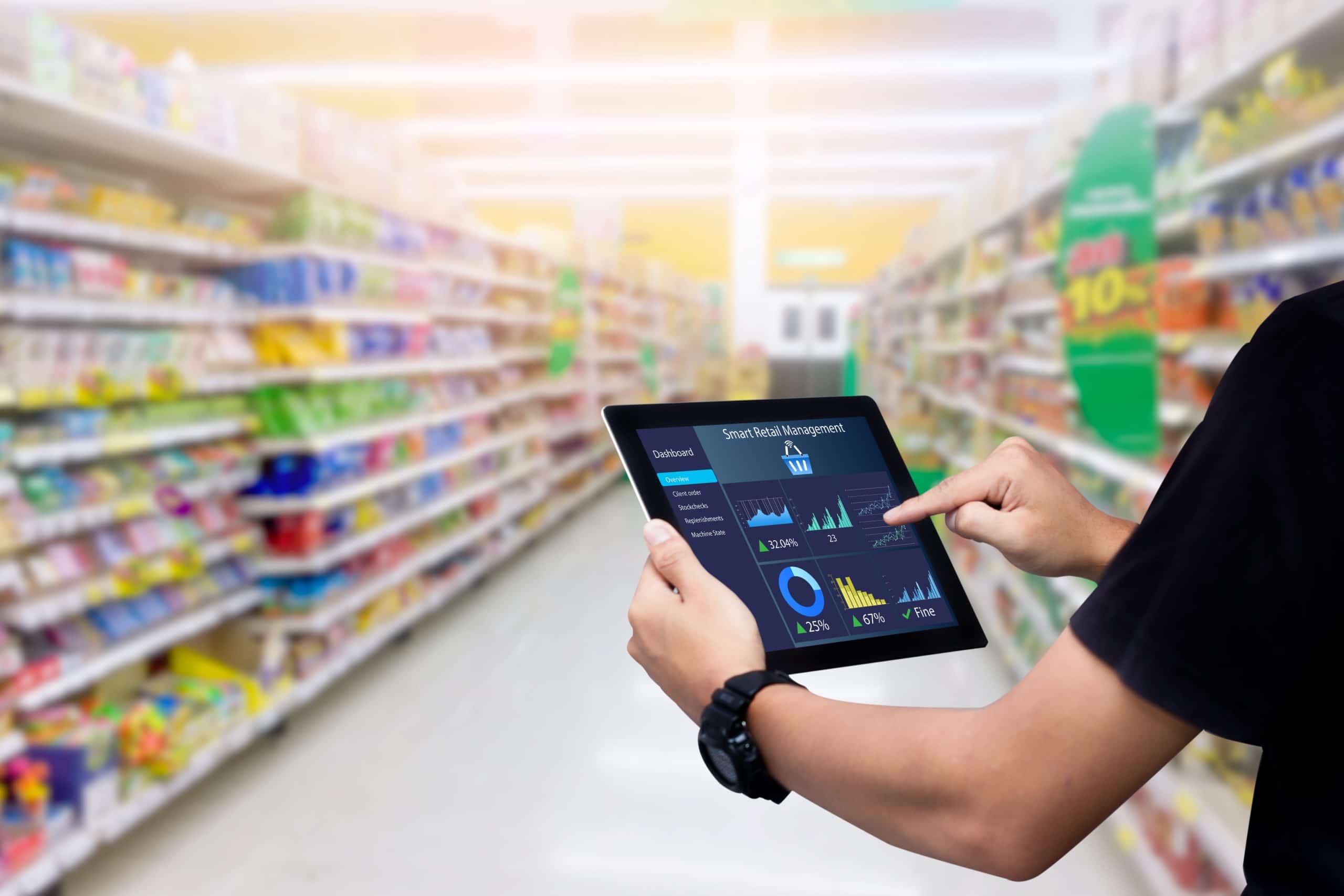
Retail Store Operations Best Practices: How To Improve Retail Store Operations
Anyone who has ever worked in retail knows that there are a lot of operational factors that contribute to the success of a store or a brand. In recent years, the expansion of online commerce, social media engagement, new retail technologies and a smarter, savvier shopper have all brought new operational considerations to the table, and meeting them likely means re-examining your current arsenal of retail best practices.
What worked yesterday will certainly not answer all the new challenges brands and retailers face today, and as our industry continues to evolve one thing is sure – new challenges and operational considerations are on the way.
What are retail store operations best practices?
Perhaps, a good place to start is to define retail store operations and why a solid program of best practices is so important. The term “retail operations” generally refers to the daily business activities a brand or retailer undertakes to effectively run their stores and other sales channels (ecommerce, events, product demonstrations, etc.). This includes product assortment, pricing, staffing, marketing, inventory, distribution, you name it.
Retail store operations best practices exist to make sure the above activities all work in unison to provide the optimal return on investment. This includes making sure dollars spent deliver the finest possible customer service, ensure seamless efficiency in distribution and inventory, create effective marketing and merchandising programs, and, of course, result in the highest possible bottom-line profits.
What’s changed? Pretty much everything.
Formulating specific retail store operations best practices really depends on your individual product mix, customer base, store locations and countless other factors. No blog is going to be able to inform you on exactly what steps you should take to update your best practices, and we certainly won’t try to do that in this post. What we can offer, however, are a few general considerations that are worth examining given today’s retail climate. Here are a four big ones you need to be prepared to address when establishing your retail best practices.
#1 Now more than ever, the customer truly is king.
While this has always been true to a great degree, today’s customer has more options and opportunities than those of previous generations by a longshot. Between brick-and-mortar stores, online shopping, delivery and pick-up options, social media channels and a host of other retail advancements, today’s customer is one who doesn’t mess around. They expect you to understand exactly what they want and provide it without any hassles, worries or delays. These shoppers are not big on second chances. Fail to deliver what they want and you’re not likely to see them again for quite some time.
As a brand or retailer, it is imperative that you tap into your customers’ needs and wants because meeting them at every turn is the key to converting sales and bringing them back again and again. Therefore, you need to establish retail operations best practices that provide you with actionable intelligence about your customers, and the best way to get there is by leveraging the latest data-driven retail technologies.
Today’s digital data solutions are truly remarkable. They’re able to deliver real-time insights into customer behaviors, shopping preferences, traffic patterns, geographical data and a whole lot more. These solutions can also measure the performance of promotional programs, track sales by product and category, even allow you to see store shelves and displays exactly has customers see them through the power of real-time photo capture.
The right data solutions will provide the actionable insights you need to make informed and intelligent business decisions to better meet your customers’ shopping demands.
Interested in learning more about how data is driving better customer relationships? Talk to the engagement experts at The Revenue Optimization Companies (T-ROC).
#2 Service extends beyond the store
We live in an omnichannel retail universe and that means you can’t rely on customers to come visit your physical location. Rather, you need to make the effort to reach out to them on their terms. This means making sure your service strategy extends beyond face-to-face encounters. Here’s the catch. Customers still expect an outstanding shopping and service experience, whether that happens in a store, online or anywhere else.
Adding new customer engagement technologies to your best practices strategy can go a long way toward extending your high service standards to the many different ways your customers shop.
For example, VIBA, the world’s first Virtual Interactive Brand Ambassador, allows you to deliver consistent, personalized, informative, and entertaining shopping experiences across every sales channel – in stores, online, at events, even to potential customers walking down the street.
“VIBA allows customers to connect with a live sales agent via video chat or a Virtual Agent we’ve name Valerie for a personalized shopping experience anytime, anywhere, any way they want,” says Eduardo Santaella of The Revenue Optimization Companies (T-ROC), a leading retail management company that developed VIBA alongside a team of strategic partners.
“Customers can watch product demos, go over available options, get warranty information, select colors and much more. VIBA is truly a go-anywhere sales force. Customers can launch it shopping at home using a simple weblink. They can scan QR codes on products or advertisements or even TV commercials to launch VIBA. We can even put Smart Signs in stores and at events that activate the moment a customer approaches. VIBA makes it possible to take powerfully personal and interactive shopping experiences anywhere – and that’s never been available to brands and retailers before.”
To learn more about VIBA and all the ways it can create new engagement opportunities, visit www.vibaconnect.com. For more information about the new age of retail and what it takes to succeed, visit www.trocglobal.com.
#3. People continue to be game changers.
While it is critical to integrate new retail technologies into your best practices, it’s also important to remember that putting the right people in front of your customers has an invaluable impact in retail operations and sales.
The human element will always be a key component of retail store operations best practices, particularly for businesses that have built their reputations in brick-and-mortar sales. The questions become where do you find the right people? Once you do, how do you effectively train them? How do you efficiently scale up and scale back staffing as needed? Who handles the interviewing and onboarding process?
The fact is the best practice for hiring the best people often comes down to outsourcing to a retail staffing agency. Not only do the good ones already have a pool of vetted talent in place, they usually handle training and onboarding for their clients. In other words, they do the heavy lifting to recruit and place the people you need and probably wouldn’t be able to locate or hire on your own.
How does your company handle staffing? Interested in learning more about the benefits of outsourcing? Talk with the experts providing turnkey solutions to Fortune 100 brands and retailers.
#4. Digital automation is an awesome advantage
Automation is a broad subject extending to many different areas of retail store operations. But what it really boils down to is that new technologies incorporated into best practices are making it possible for companies to do more, spend less time and money, and get the job done a whole lot more effectively.
For example, let’s look at inventory management. It might come as a shock to you, but most retailers operate at an on-hand inventory accuracy level somewhere in the neighborhood of 50%. In other words, if you asked these retailers what products they have in stock at any given time, the answer would be nothing more than a complete toss-up.
This is because the traditional manual methods of managing inventory are ridiculously time consuming and riddled with human error simply due to the exhaustive effort required to get the job done. However, now these same companies can implement RFID programs that allow store operators to capture on-hand inventory with near 100% accuracy in a matter of minutes. Literally, in the time it takes to wave a wand across a display or aisle, complete and accurate inventory is captured.
RFID is just one way digital automation is changing the game for brands and retailers. From inventory management to point-of-sale (POS) systems to customer relationship tools to field reporting software, digital solutions are streamlining, optimizing, and improving performance across countless areas of business. Finding out how they can help your retail store operations perform better is a key component of developing effective best practices.
Takeaways
Solid retail store operations best practices are not a one-size-fits-all endeavor. Every store is different. Every brand is unique. Every customer base has its own needs and wants, and every business has its own set of values and operational goals.
That being said, best practices are established to help businesses run more efficiently and achieve higher profits. This is only possible when the current retail climate, as well as new challenges and opportunities expected down the road, are brought into the equation. We’ve touched on a few in this post. If you’re interested in digging deeper, let’s talk. You can also learn more about The Revenue Optimization Companies (T-ROC) and our retail management services at www.trocglobal.com.
If you found this post interesting and informative, we invite you to explore our additional posts covering all things retail at https://trocglobal.com/company/#blog.
TROC is the leading provider of premier staffing outsource, software, managed technology services, and consumer insights for the top global brands, retailers, manufacturers, service providers, and distributors. The company’s distinctive solutions address the entire lifecycle of brick and mortar brand and retail operations by combining retail expertise, best practices, and technology to help its customers achieve sales and operational excellence as well as a sustainable competitive advantage. As a Retail 4.0 thought leader, T-ROC enables companies with high-value products in the physical world to thrive through the digitalization of the physical shopping experience. To learn more about T-ROC, visit www.trocglobal.com.








